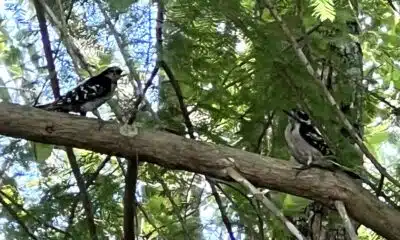
sneakpeekpic via iStock / Getty Images Plus
Lauren S. Hughes, University of Colorado Anschutz Medical Campus and Kevin J. Bennett, University of South Carolina
The public health provisions in the massive spending package that President Donald Trump signed into law on July 4, 2025, will reduce Medicaid spending by more than US$1 trillion over a decade and result in an estimated 11.8 million people losing health insurance coverage.
As researchers studying rural health and health policy, we anticipate that these reductions in Medicaid spending, along with changes to the Affordable Care Act, will disproportionately affect the 66 million people living in rural America – nearly 1 in 5 Americans.
People who live in rural areas are more likely to have health insurance through Medicaid and are at greater risk of losing that coverage. We expect that the changes brought about by this new law will lead to a rise in unpaid care that hospitals will have to provide. As a result, small, local hospitals will have to make tough decisions that include changing or eliminating services, laying off staff and delaying the purchase of new equipment. Many rural hospitals will have to reduce their services or possibly close their doors altogether.
Hits to rural health
The budget legislation’s biggest effect on rural America comes from changes to the Medicaid program, which represent the largest federal rollback of health insurance coverage in the U.S. to date.
First, the legislation changes how states can finance their share of the Medicaid program by restricting where funds states use to support their Medicaid programs can come from. This bill limits how states can tax and charge fees to hospitals, managed care organizations and other health care providers, and how they can use such taxes and fees in the future to pay higher rates to providers under Medicaid. These limitations will reduce payments to rural hospitals that depend upon Medicaid to keep their doors open.
Second, by 2027, states must institute work requirements that demand most Medicaid enrollees work 80 hours per month or be in school at least half time. Arkansas’ brief experiment with work requirements in 2018 demonstrates that rather than boost employment, the policy increases bureaucracy, hindering access to health care benefits for eligible people. States will also now be required to verify Medicaid eligibility every six months versus annually. That change also increases the risk people will lose coverage due to extra red tape.
The Congressional Budget Office estimates that work requirements instituted through this legislative package will result in nearly 5 million people losing Medicaid coverage. This will decrease the number of paying patients at rural hospitals and increase the unpaid care hospitals must provide, further damaging their ability to stay open.
Additionally, the bill changes how people qualify for the premium tax credits within the Affordable Care Act Marketplace. The Congressional Budget Office estimates that this change, along with other changes to the ACA such as fewer and shorter enrollment periods and additional requirements for documenting income, will reduce the number of people insured through the ACA Marketplace by about 3 million by 2034. Premium tax credits were expanded during the COVID-19 pandemic, helping millions of Americans obtain coverage who previously struggled to do so. This bill lets these expanded tax credits expire, which with may result in an additional 4.2 million people becoming uninsured.
An insufficient stop-gap
Senators from both sides of the aisle have voiced concerns about the legislative package’s potential effects on the financial stability of rural hospitals and frontier hospitals, which are facilities located in remote areas with fewer than six people per square mile. As a result, the Senate voted to set aside $50 billion over the next five years for a newly created Rural Health Transformation Program.
These funds are to be allocated in two ways. Half will be directly distributed equally to states that submit an application that includes a rural health transformation plan detailing how rural hospitals will improve the delivery and quality of health care. The remainder will be distributed to states in varying amounts through a process that is currently unknown.
While additional funding to support rural health facilities is welcome, how it is distributed and how much is available will be critical. Estimates suggest that rural areas will see a reduction of $155 billion in federal spending over 10 years, with much of that concentrated in 12 states that expanded Medicaid under the Affordable Care Act and have large proportions of rural residents.
That means $50 billion is not enough to offset cuts to Medicaid and other programs that will reduce funds flowing to rural health facilities.

Halfpoint Images/Moment via Getty Images
Accelerating hospital closures
Rural and frontier hospitals have long faced hardship because of their aging infrastructure, older and sicker patient populations, geographic isolation and greater financial and regulatory burdens. Since 2010, 153 rural hospitals have closed their doors permanently or ceased providing inpatient services. This trend is particularly acute in states that have chosen not to expand Medicaid via the Affordable Care Act, many of which have larger percentages of their residents living in rural areas.
According to an analysis by University of North Carolina researchers, as of June 2025 338 hospitals are at risk of reducing vital services, such as skilled nursing facilities; converting to an alternative type of health care facility, such as a rural emergency hospital; or closing altogether.
Maternity care is especially at risk.
Currently more than half of rural hospitals no longer deliver babies. Rural facilities serve fewer patients than those in more densely populated areas. They also have high fixed costs, and because they serve a high percentage of Medicaid patients, they rely on payments from Medicaid, which tends to pay lower rates than commercial insurance. Because of these pressures, these units will continue to close, forcing women to travel farther to give birth, to deliver before going full term and to deliver outside of traditional hospital settings.
And because hospitals in rural areas serve relatively small populations, they lack negotiating power to obtain fair and adequate payment from private health insurers and affordable equipment and supplies from medical companies. Recruiting and retaining needed physicians and other health care workers is expensive, and acquiring capital to renovate, expand or build new facilities is increasingly out of reach.
Finally, given that rural residents are more likely to have Medicaid than their urban counterparts, the legislation’s cuts to Medicaid will disproportionately reduce the rate at which rural providers and health facilities are paid by Medicaid for services they offer. With many rural hospitals already teetering on closure, this will place already financially fragile hospitals on an accelerated path toward demise.
Far-reaching effects
Rural hospitals are not just sources of local health care. They are also vital economic engines.
Hospital closures result in the loss of local access to health care, causing residents to choose between traveling longer distances to see a doctor or forgoing the services they need.
But hospitals in these regions are also major employers that often pay some of the highest wages in their communities. Their closure can drive a decline in the local tax base, limiting funding available for services such as roads and public schools and making it more difficult to attract and retain businesses that small towns depend on. Declines in rural health care undermine local economies.
Furthermore, the country as a whole relies on rural America for the production of food, fuel and other natural resources. In our view, further weakening rural hospitals may affect not just local economies but the health of the whole U.S. economy.
Lauren S. Hughes, State Policy Director, Farley Health Policy Center; Associate Professor of Family Medicine, University of Colorado Anschutz Medical Campus and Kevin J. Bennett, Professor of Family and Preventive Medicine, University of South Carolina
This article is republished from The Conversation under a Creative Commons license. Read the original article.

























































